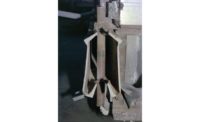The National Institute of Standards and Technology is continuing to help engineers learn from failures through the development of its Disaster and Failure Events Data Repository (ENR 4/25/11 p. 14). NIST released its first component—the World Trade Center database—last August. The next component is a pilot based on Chile's magnitude-7.1 Maule quake in 2010. NIST has pushed the launch from early this year to late this year or early next year.
"Getting permissions from all the people who own the building plans, photos and data is challenging," says Eric Letvin, the program's director at NIST, Gaithersburg, Md.
The Chile quake pilot is being developed for NIST by Purdue's NEES through the Applied Technology Council and others. NEES already has a database on Haiti's 2010 magnitude-7 quake. Computer tools also are aiding forensic engineers in the form of forensic information models. FIMs are building information models that turn incidents into analytical models, said William Bast, a principal in the Chicago office of structural consultant Thornton Tomasetti.
TT created a FIM to settle a dispute over cladding-panel damage caused by a Dumpster falling from the 51st floor of the Bank of America project in New York City. TT also used FIM to conclude that corroded, locked bearings caused the 2007 failure of the Minneapolis Interstate 35W bridge (ENR 4/6/09 p.12). TT's theory contradicts the National Transportation Safety Board, which says underdesigned gusset plates were the cause.
There are other efforts to digitize collapse data. Robert T. Ratay, New York City, is leading the charge to build a global failure database under the auspices of the International Association for Bridge and Structural Engineers. To avoid duplicate work, the several groups should collaborate, said one meeting attendee.



Post a comment to this article
Report Abusive Comment